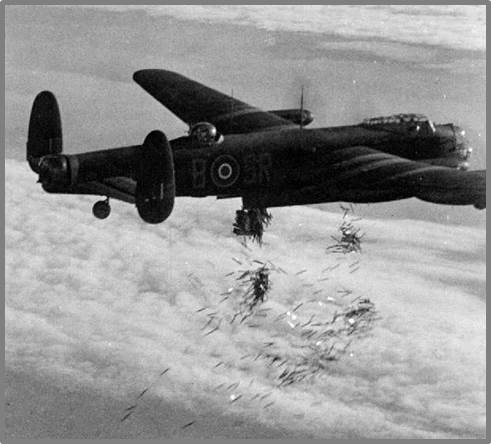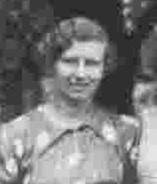The History Column: Chaff
The fifth event in this series of notable historical events of interest to AESS is the first operational use of chaff, on 23 July 1943. Chaff is the name given to the radar countermeasure in which a cloud of metal strips is deployed, each of length approximately half the wavelength of the victim radar, so that each behaves as a dipole. This produces a large, diffuse false target which persists for some time as the strips flutter to ground.

In the UK much of the development work was carried out in the early 1940s by Joan Curran, who was the only female scientist at TRE (the Telecommunications Research Establishment). She had been a student at Cambridge University just before the outbreak of WW2, although Cambridge did not award degrees to female students till 1948. She also rowed in the first Women’s Boat Race between Oxford and Cambridge.

Afterwards she wrote:
I worked on the early development of Window. I cut up copper foil and made strings or ladders of the bits and the first trial was carried out one Saturday morning at Sturminster Marshall GCI [Ground Controlled Intercept] station. The results of this primitive experiment were quite spectacular, the whole baseline of the display unit being deflected. We later used condenser paper and the whole thing became more sophisticated, with the strips of paper getting thinner and thinner, and effort being concentrated on how to package and drop them rather than just throwing them over the side of the aircraft. After the move to Malvern, larger scale trials were held on the east coast over the North Sea, and a final big trial took place at Drem; this last one I did see in company with the then Dr Cockburn [later Sir Robert Cockburn].
It had been necessary to devise a codeword for the technique, which should bear no relationship to the technique itself. Albert Rowe (Superintendent of TRE) and Robert Cockburn looked around the room and Rowe said ‘what about Window ?’. So ‘Window’ it was.
Although the technique was clearly very effective, it was realised that as soon as it was used, German scientists would find the metal strips, understand how it worked, and use it themselves. Since there was no effective counter-countermeasure, it was judged to be too risky to use, until Churchill eventually authorised its use on 23 July 1943. It was indeed devastatingly effective, and was widely used for the rest of WW2. However, it transpired that German scientists had independently had similar ideas. The technique was known as Düppel, after a region in Berlin where the tests were made (though the term does sound rather similar to ‘dipole’). For very similar reasons, Goering (Chief of the Luftwaffe) kept the results in strict secrecy and prohibited its use.
Nowadays chaff is a well-established countermeasure against radar – though the elements are more likely to be metallised glass fibers than metal strips.
Further information may be found in:
Jones, R.V., Most Secret War, Hamish Hamilton, 1978, chapter 33.
Latham, C. and Stobbs, A., Pioneers of Radar, Stroud, 1996.
Authored by Hugh Griffiths
University College London

